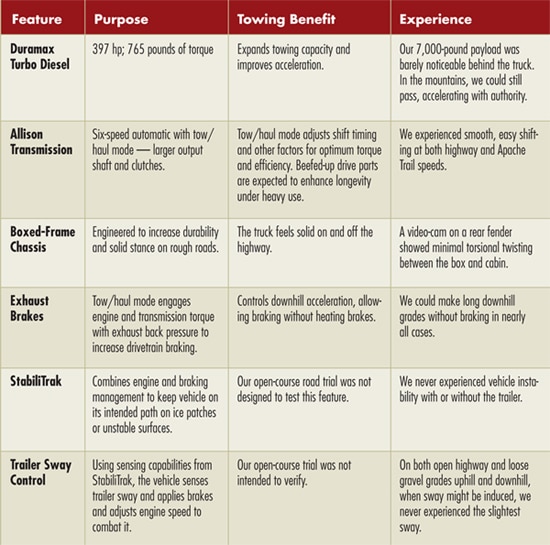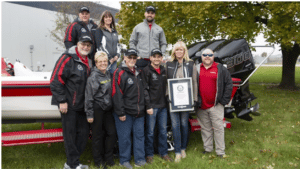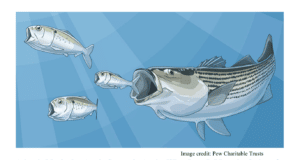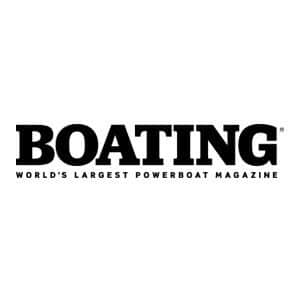_**Click here for video of the Chevrolet Silverado 3500HD being tested on the Apache Trail.**_
In spite of continued demand for lighter, more fuel-efficient passenger cars, truck owners are demanding increased towing and cargo capacity from their light trucks. That makes truck builders’ jobs ever more difficult. After all, how do you increase cargo and towing capacity, decrease weight, increase torque and power and decrease fuel consumption?
That’s the dilemma of the day, and it is most critical to boaters who must move their rigs efficiently and safely from driveway to launch ramp. To meet the demand, Chevrolet is the latest of the Big Three to retool their heavy-duty towing machine.
To test the new truck, Chevy came to Boating to see if we could suggest a challenge for the key advantages engineered into the vehicle. I had just the spot: Arizona State Route 88. Known locally as the Apache Trail for its early use by raiding tribes moving from the Salt River basin into Phoenix, the trail in 1903 became a service road to haul supplies and materials for construction of Roosevelt Dam. Since then, it has been only partially paved, making the mountainous, switchback trail rocky and rutty. In many places the roadway edge drops into canyons hundreds of feet deep. This would be the perfect 2011 Silverado 3500HD road test in my book.
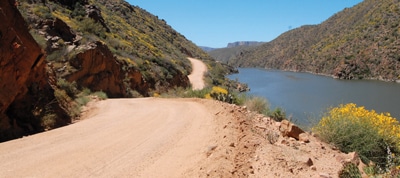
I picked up the Silverado near the Phoenix Sky Harbor International Airport and headed over to Complete Marine to hitch up a 7,000-pound Bayliner 245 and trailer. The staff there had the boat spiffed to the max — they’d even glossed the trailer tires for the video camera. Faces fell when I mentioned we’d be filming on the Apache Trail. Dust would stick to the viscous tire black like powder paint.
The folks at the dealership skillfully assisted us in setting up our hitch. Besides having a proper size trailer for the load and a truck equal to the task of hauling it, there’s a trick to getting the trailer to follow with manners. Complete Marine helped us select and install the proper ball and mount. Ball mounts slide into the square receiver socket built into the truck hitch. Choosing the ball mount with the correct “drop” is critical to keeping trailer and truck frame aligned and level. If the trailer is tilted up or down, trailer sway, bucking, tire damage or even a devastating accident can result.
My next stop was Queen Creek, Arizona, a once-quaint farming community turned “suburbia” by the now-busted housing boom. Queen Creek Olive Mill, recently featured on The Food Network, is one of a handful of olive farms in Arizona enabled by the dry climate plus irrigation from the Salt River Valley/Apache Trail area. For me, the attraction to Queen Creek is that my kids live there. My daughter, Megan Chacon, and Brody, her son, would accompany me on part of the expedition in the Silverado. Megan directed me to her place on the cell phone since most roads out there are just too new for GPS Navigator. I was turning left and right, reading out the road signs to her, and then I turned a corner and heard her say with a laugh, “Oh, my gosh! That is huge!”
My personal truck is a half-ton gas truck that pulls my 7,000-pound boat in the flat land of Florida. It’s strong, but the diesel’s power in the Silverado 3500HD was already apparent to me as I inadvertently pulled away from our video chase vehicle early in our route. Until then, what wasn’t apparent was the size. It stood up well to the 25-foot cuddy, looking balanced and poised, not overwhelmed like a half-ton truck would.
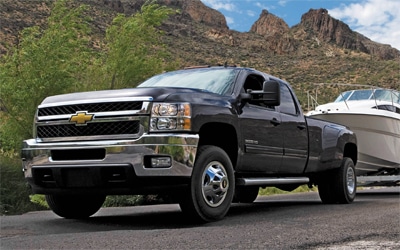
In the morning, we would quickly come to appreciate the power, smooth shifting and remarkable maneuverability as both Megan and I took turns piloting through the mountains.
In the parking lot of my favorite eatery, San Tan Flat, the Silverado was already proving it had passed one of the challenges — marquis value. It had drawn a crowd of a dozen or so admirers.
“What is it?” one girl asked. “I know it’s a Silverado, but I’ve never seen one like it before.”
To get these oohs and aahs on the 2011 model, Chevy built on the angular, faceted lines already popular in its half-ton Silverado. It emboldened the hood with an aggressive black air-scoop cowling and trimmed the front in a beefy-looking chrome grill and bumper. Instead of add-on splash guards most duallies have, the one-piece fenders on the new HD curved nicely from the fender edge to the pickup bed. The fender metal folded flat against the well sheeting, leaving no overhanging parts to catch mud, slush or snow. That should improve rust resistance, since moisture trapped against the metal is apt to cause corrosion. I also felt it could improve safety, making it unlikely the truck would collect and dislodge snow chunks or mud balls at highway speeds.
Next morning, we pulled onto eastbound Highway 60 toward Miami, Arizona, where we’d turn west on Arizona 188 toward Roosevelt Lake and the end of the Apache Trail. We were going to film only in the northwestern portion of the trail because the Mesa Ranger District of Tonto National Forest denied our permit. The trail hadn’t been graded in a year, we heard, and when the rangers heard we’d tow a 25-foot boat up a portion of the trail called Fish Creek Hill, they didn’t want our visit. The road there is singlelane, and in spots rocky walls lean over it, further reducing clearance. Should oncoming traffic force a stop, getting started on the steep grade would be a task for any truck.
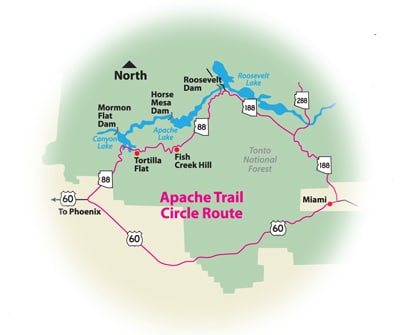
Highway 60 up into the White Mountains hits grades of 7 percent. When we climbed into them, the truck downshifted smoothly, kept its place in the cluster of vehicles with authority, and allowed us to pass easily when the time was right. Running down the grades, we kept our foot off the brake. Chevy had engineered exhaust brakes into the system to work together with the Allison transmission, controlling our downhill coasting without heating the brakes. It worked well on the steepest grades, sometimes requiring a manual downshift.
Also incorporated into the drivetrain is anti-sway control, a mechanism that measures braking, wheel revolutions and other factors to check trailer sway before it gets out of hand. We didn’t attempt to test that feature, but keeping a steady hand on the wheel, we had no difficulty avoiding an unexpected road hazard or making lane changes quickly.
In Roosevelt, we stopped by the Tonto National Forest information office to speak with Jonathan McNeil, the ranger who’d worked so hard to help us complete our permit.
“I’ve been checking with people and get conflicting reports about the passability of Fish Creek Hill,” I said.
“The trail hasn’t been graded in a while,” McNeil said, edging toward that front door. “Wow, that is a big rig. You still going up Fish Creek?”
“Well, I know I can’t film there. But do you think we can make it?” I asked. McNeil never replied.
A mile or so from the Roosevelt Dam we found that the Apache Trail pavement ends in about 42 miles of ruts, washboards and dusty potholes. Maximum speed is 25 mph due to unexpected blind curves and oncoming traffic. We often had to stop in wide spots with two wheels in the cliffside ditch to let it pass. Sometimes, the traffic had to give way, but never did we find a dilemma we couldn’t manage.
The first thing we noticed when we crossed ragged washboard road patches was firmness of the frame. Chevy claimed a new, heavier box beam frame would give the vehicle more rigidity than in its previous vehicles and in some of the competition’s. We didn’t have either for an immediate comparison, but in this one, the suspension seemed to absorb the vibration and the truck bed stayed well aligned with the cabin.
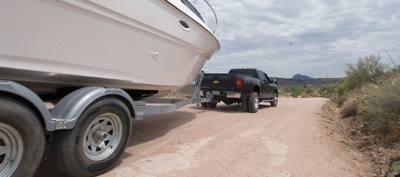
Our first launch ramp was at Burnt Corral on Apache Lake. We barely wet the wheels to get the Bayliner afloat, and when we reloaded and hauled it, there was not a bit of wheel slip as we pulled out. Launching there eliminates 10 or more miles of winding, dusty road, but the ramp is only four miles from the resort, marina and restaurant at waterway’s center.
We beached our boat on a sandy spot near Apache Lake Resort and Marina and hiked up the hill for iced tea and burgers. Inside the restaurant, historic photos of the area were numbered, and the waitress offered a leaflet of the captions.
“So, Fish Creek Hill.” I dropped the name as she finished jotting our order. “Can I make it up the hill?”
“I used to pull a smaller boat up and down it. If you skid, it can rock your axle toward the guardrail.”
I’d seen the guardrail on another trip. It wasn’t much to depend on. In fact, parts of it were missing, and broken car parts lay below.
“Coming down, you have another problem,” she continued. “Tourists are afraid to stop and wait by the rail and don’t know what to do. I’ve had to stop, park up against the bluff and guide them around my rig.”
It was 3 o’clock by then. We’d shot five or six hours of tape and, though we couldn’t film or photograph on Fish Creek Hill in the Mesa District, we couldn’t be told not to drive it.
It was an hour to Queen Creek if we finished the trail through Tortilla Flats. There we’d find an Old West saloon, complete with saddles for bar stools. I’d promised my crew a beer in a frozen Mason jar there, and the schedule wouldn’t permit going around.
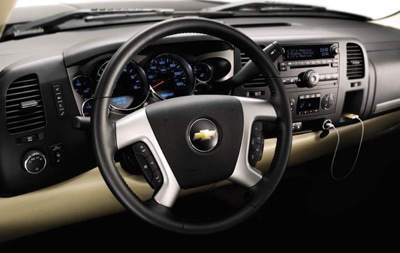
We did meet one car coming down Fish Creek and stopped while he pulled to a wide spot inside. The gradual torque of the diesel and the smooth transmission gave us secure footing as we pressed on by.
Ten minutes later the beer at Tortilla Flats looked good. Me, I was the designated driver with a daughter and grandson on board. The iced tea went down pretty smoothly.
